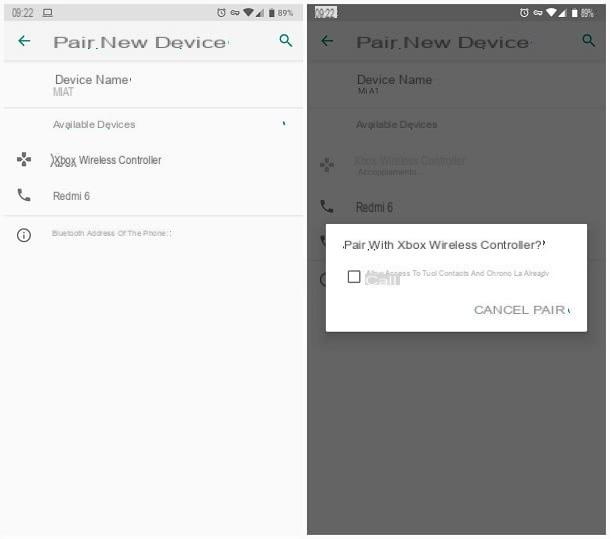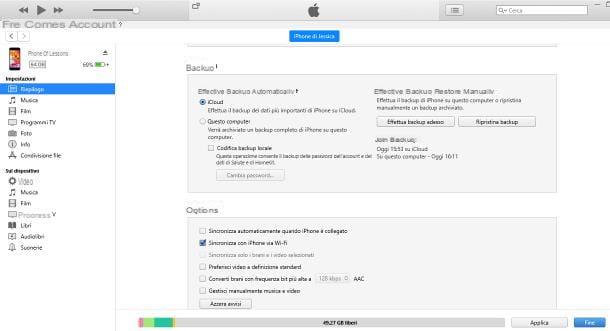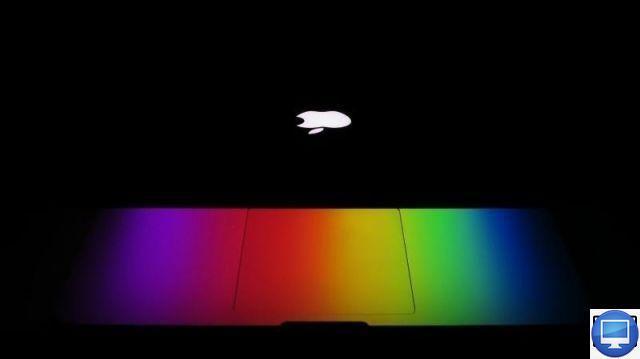Wi-Fi is everywhere: from computers and smartwatches to smartphones and tablets, but not all wireless networks are created equal. Whether we are talking about Wi-Fi n, ac, ad or Wi-Fi 5, 6 or 7, it is sometimes difficult to understand the differences between the standards. Here is our guide to understanding everything about Wi-Fi.
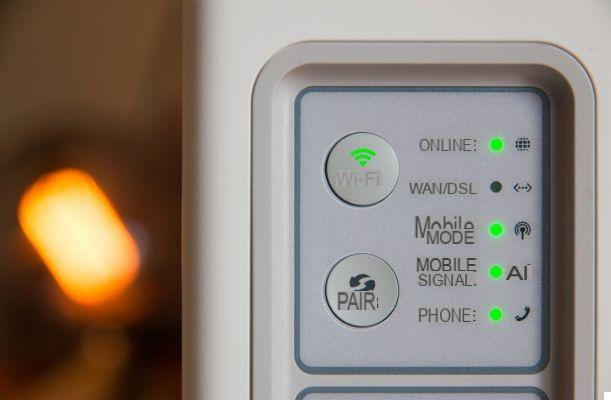
Update of the file in November 2018 to take into account the new nomenclature.
Wi-Fi first saw the light of day in the late 90s. At the time, we weren't even talking about Wi-Fi, but the Apple AirPort was found in the iBook in 1999. A few years later , the term Wi-Fi was generalized for all the 802.11 standards whose certification is supported by the WECA (now Wi-Fi Alliance). Wi-Fi covers many different standards all of which are prefixed 802.11. A suffix in the form of a letter is used to distinguish between standards. For individuals, we are talking about seven different generations: 802.11a / b / g / n / ac / ad / ax. Each represents an evolution compared to the previous one. Let's take a closer look at their specificities!
| 802.11 | Frequency band | Maximum theoretical flow | Range | Congestion | Channel width | MIMO |
|---|---|---|---|---|---|---|
| WiFi 1 (a) | 5 GHz | 54 Mbps | Low | Low | 20 MHz | No |
| WiFi 2 (b) | 2,4 GHz | 11 Mbps | correct | High | 20 MHz | No |
| WiFi 3 (g) | 2,4 GHz | 54 Mbps | correct | High | 20 MHz | No |
| WiFI 4 (n) | 2,4 GHz | 288 Mbps | Good | High | 20 MHz | No |
| WiFI 4 (n) | 5 GHz | 600 Mbps | correct | Low | 20 or 40 MHz | Yes |
| WiFi 5 (ac) | 5 GHz | 5 Mbps | correct | Low | 20, 40, 80 or 160 MHz | Yes |
| WiFi 6 (ax) | 2,4 and 5GHz | 10 Mbps | correct | Very weak | 20, 40, 80 or 160 MHz | |
| ad | 60 GHz | 6 Mbps | Very weak | Low | 2 160 MHz | Oui (+MU-MIMO) |
As can be seen in the table above, there are a lot of different theoretical flow rates. Before going into more details, it should be noted that the flow recorded in practice is much lower than the maximum theoretical flow. This is due to the way the 802.11 protocol works. In addition, the flow rate is strongly dependent on the distance between the devices, but also on the obstacles (such as walls) that stand in the way. In the best case, it is necessary to count on a practical flow rate approximately two times lower than the theoretical flow. And in the worst-case scenario (walls, interference), the flow can literally collapse to the point of loss of signal.
Wi-Fi 2 (802.11 b): the beginnings
Wi-Fi therefore made its debut in 1999 with the 802.11a (WiFi 1) standards intended for businesses and 802.11 b intended for individuals. Wi-Fi B uses the 2,4 GHz band and DSSS modulation with which it caps at 11 Mb / s. Wi-Fi A uses the 5 GHz band and OFDM frequency distribution which allow it to '' reach 54 Mb / s.
Let us remember, and this is a general truth, that the lower the frequency, the more the signal carries, but on the other hand the more it is subjected to interference. Not only to interference from other Wi-Fi networks, in this case, but also and above all to interference from other signals, the 2,4 GHz band also being that of Bluetooth, DECT cordless telephones and ... microwave.
Wi-Fi 3 (802.11g) : l’unification
Wi-Fi G alone replaced Wi-Fi A and B in 2003. The IEEE 802.11g standard effectively combines the more efficient OFDM modulation of Wi-Fi A with the 2,4 GHz frequency band of Wi-Fi B , which makes it possible to offer the general public the theoretical maximum speed of 54 Mb / s of Wi-Fi A, with the greater range of Wi-Fi B, while ensuring backward compatibility with pre-existing Wi-Fi B equipment. -existing.
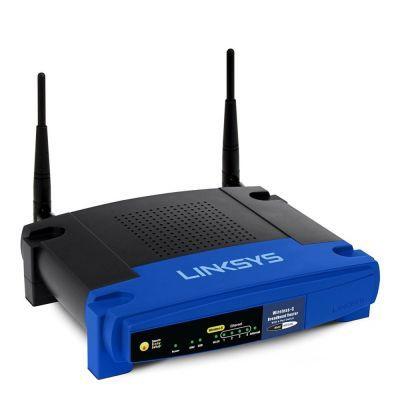
The Linksys WRT54G, iconic Wi-Fi router of the Wi-Fi G era
Wi-Fi 4 (802.11n): the rise in speed
IEEE 802.11n is a major revision that literally increases the theoretical maximum throughput tenfold. To do this, the standard brings two developments: MIMO technology and doubled bandwidth.
Wi-Fi N can operate in a 20 MHz wide band, as before - in which case it delivers a maximum of 72,2 Mb / s - and now 40 MHz wide. As the speed is proportional to the bandwidth, as with 4G, a 40 MHz flow is twice as fast as a 20 MHz flow, i.e. 150 Mb / s.
The case of MIMO
MIMO stands for Multiple Input Multiple Output. As its name suggests, this technology allows Wi-Fi to operate multiple streams simultaneously. We speak for example of MIMO 2 × 2 for two antennas in transmission and two in reception, which doubles the speed compared to a configuration without MIMO, that is to say 300 Mb / s with 40 MHz. Wi-Fi N can reach 4 × 4 MIMO, an absolute maximum of 600 Mb / s.
Wi-Fi 5 (802.11ac): up to 2600 Mb / s
Wi-Fi AC further increases speeds by improving each of the transmission techniques used:
- given the channel width, Wi-Fi AC only works on the 5 GHz band, access points switch to Wi-Fi N on the 2,4 GHz band
- beamforming, which allows access points to direct the waves towards the terminals, is now standardized
- modulation changes from 64QAM to 256QAM, which increases the bandwidth by 25%
- new channel widths of 80 MHz and 160 MHz, which double and quadruple the bandwidth compared to the maximum 40 MHz of Wi-Fi N
- up to 8 streams in MIMO, which further doubles the bandwidth compared to the maximum 4 streams of Wi-Fi N
- Multi-user support (MU of MU-MIMO), which allows access points to communicate with multiple terminals simultaneously, rather than in turn (at very high frequency)
The IEEE specified 802.11ac, but the Wi-Fi Alliance certified the devices in two waves.
- We therefore saw the first 802.11ac Wave 1 devices in 2014. Limited to Single User and 3 streams of 80 MHz, they already delivered a maximum bandwidth of 1300 Mb / s (433 Mb / s per stream of 80 MHz)
- Since 2017, there are 802.11ac Wave 2 products compatible with Multi User with 4 streams of 80 MHz, which allow to reach 1733 Mb / s per device. Some devices claim 2166 Mb / s see 5330 Mb / s, but it is with a 1024QAM modulation which is not standardized, which can pose problems of interoperability between equipment of different brands.
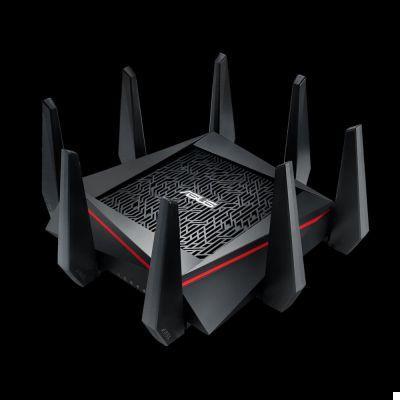
An "AC5300" router (addition of the speeds on 3 bands) encircled with antennas
802.11ad Wi-Fi: very high speed at very short range
Next is Wi-Fi AD, which is not so much the successor to Wi-Fi AC as a complementary standard. The IEEE 802.11ad was also ratified before the IEEE 802.11ac and has its own WiGig Alliance, literally “Gigabit wireless alliance”.
As its name suggests, WiGig achieves data rates expressed in gigabits per second with a single stream. It works for this at very high frequency, on the 60 GHz band, with a channel width of… 2160 MHz. Wi-Fi AD therefore does not pass through walls, it can just reflect against surfaces to reach devices in indirect view. Its maximum range is 10 meters.
In practice, a Single Carrier mode offers a maximum throughput of 4,6 Gb / s, and a triple-band OFDM mode also using the 2,4 and 5 GHz bands offers a maximum throughput of 7,2 Gb / s.
In 2017, WiGig is mainly used to design wireless docking stations for business laptops. The very high speeds allow one or two displays and USB peripherals to be connected. For local networks, we are still content with Wi-Fi AC.

Wi-Fi 6 (802.11ax): free up the network
This new evolution of Wi-Fi theoretically makes it possible to exceed 10 Gb / s while maintaining compatibility with the two frequencies of the previous versions: 2,4 and 5 GHz.
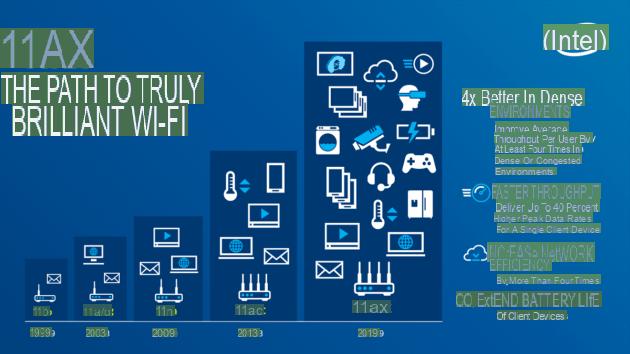
Developed with the IoT and smartphones in mind, this standard should reduce energy consumption and therefore increase the autonomy of our devices.
To learn more
Wi-Fi 6: which smartphones, PCs, routers and devices to take advantage of WiFi 6 (802.11ax)
The objective of this new generation is also to improve the management of dense networks, ie mainly public places where several dozen or even several hundred mobile devices can circulate. A use case that 802.11 ac Wi-Fi did not respond to.
Compatibility between all these standards
In the best of all possible worlds, all of these standards would be compatible with each other. Unfortunately, we are in the IT world, and interoperability between all standards is sometimes tricky. First of all, if the router is configured on the 5 GHz band, it will not be visible to devices in the 2,4 GHz band and vice versa. To overcome this limitation, most routers are dual-band so that the user can configure two different Wi-Fi networks: one on the 2,4 GHz band and another on the 5 GHz band.

Apart from this constraint, all the Wi-Fi standards mentioned in this article are backward compatible with each other. As long as the two devices are located on the same frequency band, the device that supports the most recent (or better) standard will adapt to the older (or less efficient) standard.. For example, an 802.11g Wi-Fi smartphone can connect to an ac router if the latter is dual-band and therefore has a network on the 2,4 GHz band.
And in practice?
All these standards and theoretical speeds are very nice, but in practice, what does it look like? As we already discussed in the article, compared to the theoretical throughput, the practical throughput is roughly halved, even if the device is next to the router. Today, the 2,4 GHz frequency band is often saturated, especially in urban areas, and 802.11g and n Wi-Fi devices that use it will therefore often be limited to the simplest tasks: web page loading and music streaming.
With a smartphone or a tablet, uses are moving more and more towards viewing video content. In this case, especially for HD videos, the 802.11 GHz 5n Wi-Fi may be necessary to avoid micro-cuts. In addition, if you have fiber, your Internet connection offers at least 100 Mb / s. It would therefore be a shame to restrict it with too slow Wi-Fi. The theoretical speed of 802.11n Wi-Fi is limited to 70 Mb / s, so at least 802.11ac Wi-Fi is needed to take full advantage of fiber.

Orange Livebox
Wi-Fi on computers and smartphones
Regarding laptops, the situation is a little different since they often integrate several antennas. The most upscale, such as the 15-inch MacBook Pro with touch bar, integrate three antennas, which makes it possible to reach the theoretical 1300 Mb / s. But the 13-inch MacBook Pro without touch bar, it only integrates 2 antennas and is therefore limited to 867 Mb / s theoretical.
In any case, to take advantage of these 3 antennas, the router must also support the 3 spatial streams, which is not the case for all operator boxes. Indeed, only the Livebox 4 supports MU-MIMO with 4 reception antennas on the 5 GHz band. In other cases, you will need to buy a compatible router, the price of which can quickly climb.
In the end, unless you are ready to buy a compatible router and have enormous speed needs the 802.11ac Wi-Fi in its simplest form, without overbidding antennas, is currently the best compromise in terms of speed and price.
 Everything about Bluetooth: connected objects and geomarketing
Everything about Bluetooth: connected objects and geomarketing


Bluetooth is wireless technology that everyone is familiar with. It has been around for many years and had its early glory days in the days of Bluetooth headsets. Technology has come back to the fore ...




![[iPhone] iMessage Doesn't Work: No Messages Are Received | iphonexpertise - Official Site](/images/posts/6b02db17523b3c290f81b739e105ae3c-0.jpg)




